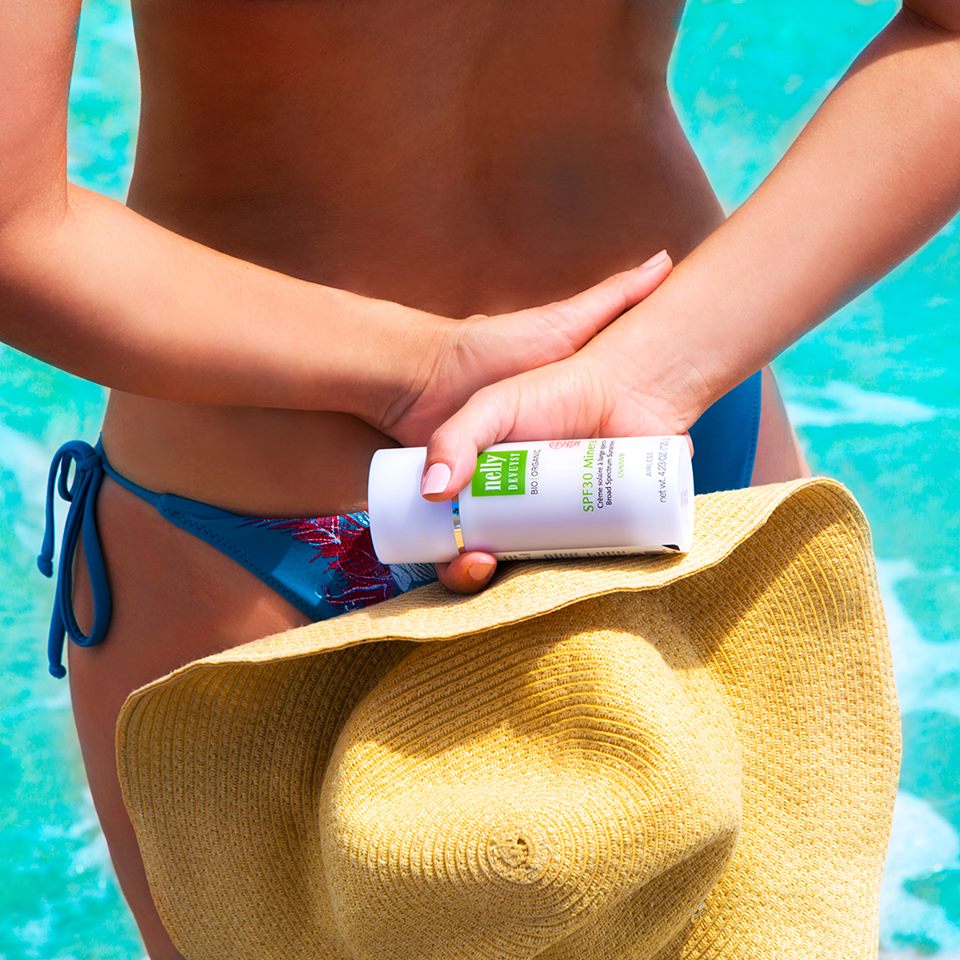Sun protection: Chemical or Mineral?
Vue totale: 8931
July 13, 2020 15:25:39
You already know that it is important to use sunscreen all year round and especially when the weather is good. A sunscreen not only protects the skin from sunburn and the development of skin cancer, but also from the premature appearance of wrinkles, sagging skin or even pigment spots. But what are the differences between chemical sunscreens and mineral sunscreens? Let’s review the characteristics of these 2 types of protection.
CHEMICAL SUN PROTECTION
Chemical sun protection consists of chemical filters. The best known include oxybenzone, avobenzone, octinixate, octocrylene and homosalate. Chemical filters are organic molecules capable of penetrating the epidermis and absorbing UV rays by releasing heat. To provide broad spectrum UVA and UVB protection, a mixture of several chemical filters is required.
Benefits:- Its texture is light and applies easily and evenly without leaving white residue
- A small amount is sufficient to protect the skin
Inconvenients:- It is necessary to wait 15 minutes after application so that a protective film forms on the surface of the skin
- May cause more allergies, irritations and reactions in sensitive skin
- May amplify the appearance of redness in skin prone to rosacea because of the heat released by chemical filters
- When exposed to direct UV rays, chemical filters are less stable than mineral filters
- Some chemical sunscreens pose an ecological problem and are involved in particular in the bleaching of coral reefs. The state of Hawaii has banned their use. Certain compounds would also be considered as endocrine disruptors and would affect the balance of the hormonal system
 MINERAL SUN PROTECTION
MINERAL SUN PROTECTION
A mineral sun protection consists of mineral filters and in particular a mixture between zinc oxide and titanium dioxide. Mineral filters are inorganic molecules that theoretically remain on the surface of the epidermis to reflect UV rays like a mirror. However, some studies have shown that mineral filters absorb certain UV rays to convert them into heat. Mineral filters are known to offer broad spectrum protection. Zinc oxide is one of the most effective filters for protecting short and long UVA and UVB rays.
Benefits:- Provides broad spectrum natural protection against UVA and UVB
- Effective upon application
- When exposed to direct UV rays, mineral filters are more stable than chemical filters
- Better tolerated by sensitive skin or skin prone to rosacea
- Can be used by babies from 6 months
Inconvenients:- Thicker texture which sometimes leaves temporary white residue
- Some formulas do not apply homogeneously
To know:
Thanks to cosmetic innovations, the textures of mineral-based sunscreens are improved and become lighter to melt on the skin when applied without leaving white residue. This is the case, for example, of the SPF 30 Mineral Sunscreen from Nelly De Vuyst Bio|Organic, a 100% mineral sun protection, without nanoparticles, certified organic COSMOS ORGANIC by Ecocert Greenlife.
Whether the sunscreen is formulated using chemical filters, mineral filters or a mixture of chemical and mineral filters, the recommendations are identical: use an SPF sun protection of at least 30 broad spectrum, to reapply every 2 hours and more often in case of sweating or after a swim!




